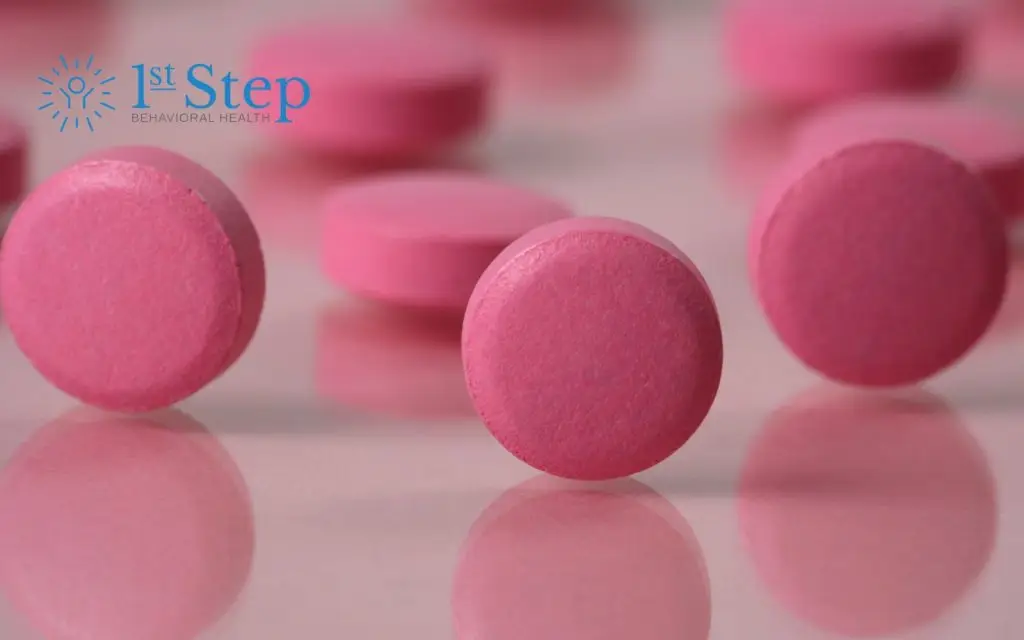If you or a loved one has come across a pink pill marked “K 56”, it’s essential to understand what it is, why it’s prescribed, and the significant risks associated with its misuse. This small, round, pink K 56 pill is more than just a prescription drug—it can lead to addiction, overdose, and long-term consequences without proper medical oversight.
Let’s explore what the K-56 pink pill is, how it works, why it’s highly addictive, and how addiction treatment can offer hope and healing.
What is the Pink K 56 Pill?
The pink K 56 pill is identified as oxycodone hydrochloride 10 mg, an immediate-release form of the opioid oxycodone. It’s a Schedule II controlled substance, meaning it has a high risk for abuse and physical dependence, even when prescribed for treating pain.
This oxycodone hydrochloride tablet is typically used for pain relief in individuals experiencing moderate to severe pain, such as after surgery or due to chronic pain conditions like cancer or nerve damage.
It’s important to note: pink oxycodone is not intended for casual or long-term use without supervision. It is a powerful pain reliever that acts quickly and strongly—making it a common target of substance abuse.
How Does Oxycodone Work in the Body?
Oxycodone works by binding to opioid receptors in the brain and spinal cord, effectively blocking pain signals from being processed. This results in a noticeable reduction in discomfort—but also a potential for experiencing desired effects like euphoria or calmness, which can quickly become addictive.
When taken as prescribed, the immediate-release oxycodone formulation provides short-term pain management. However, because it enters the bloodstream quickly, there’s an increased risk for oxycodone misuse, especially for individuals with a history of substance abuse or mental health challenges such as eating disorders, anxiety, or depression.
Immediate Risks of Misusing the K-56 Pink Pill
The K-56 pill may look harmless, but the risks of abuse are serious. Some of the dangers include:
Respiratory Depression
One of the most dangerous effects of oxycodone is respiratory depression—slowing down the respiratory system to the point where breathing may stop entirely.
Overdose
An oxycodone overdose can happen quickly, especially if someone takes more than one prescription, mixes it with other drugs (like benzodiazepines or alcohol), or has developed a tolerance and increases their dose. Signs of an opioid overdose include:
- Cold, clammy skin
- Shallow or slow breathing
- Unconsciousness or coma
- Pinpoint pupils
Physical Dependence and Withdrawal
With regular use, the body adapts to the presence of oxycodone. Stopping suddenly can cause withdrawal symptoms, including:
- Nausea and vomiting
- Muscle aches
- Anxiety and irritability
- Insomnia
- Sweating and chills
These symptoms make it difficult for individuals to stop on their own, reinforcing the cycle of oxycodone use and drug abuse.
Long-Term Consequences of Pink Oxycodone Use
When the K 56 pink pill is taken long-term, it can lead to several health complications, including:
- Chronic constipation and dry mouth
- Increased tolerance and reduced effect over time
- Difficulty concentrating and memory issues
- Dependency on prescription drugs for emotional or physical stability
Long-term users may also suffer from deteriorating overall well-being, strained relationships, and legal or financial issues due to their dependence.
When Addiction Begins: A Slippery Slope
Addiction doesn’t always begin with illicit use. For many, it starts with a legitimate need to treat moderate or severe pain. Over time, the line between treating pain and chasing the desired effects can blur—especially without healthcare professionals closely monitoring dosage and response.
This is why accurate and reliable information is crucial for families and individuals managing chronic pain with opioids.
Oxycodone vs. Other Opioid Medications
The pink pill marked K 56 is often confused with extended-release oxycodone or other opioid medications. Here’s a key distinction:
- Immediate release form (like K 56): Fast-acting for short-term relief.
- Extended-release oxycodone: Slowly released over time for long-term oxycodone therapy in chronic pain cases.
Both carry a significant risk for addiction and must only be used under strict medical guidance.
Who Is Most at Risk?
Anyone can develop a dependency on the K 56 pill, but certain groups face a higher risk. Individuals with a history of substance misuse or opioid addiction and people with co-occurring mental health conditions may be more likely to develop dependency on opioids like the K-56 pill. Other high-risk groups include those using other medications that interact with the central nervous system and patients who have been prescribed oxycodone hydrochloride for acute and chronic pain.
Hair Tests, Drug Screens, and Detection
Because of the potential for oxycodone abuse, many treatment centers and employers use hair tests or urine tests to detect the presence of oxycodone hydrochloride. These tests can identify usage several days to weeks after consumption.
Being honest with your provider about oxycodone use—whether prescribed or not—is the first step toward breaking free from dependence.
Finding Help: Oxycodone Addiction Treatment Options
If you or someone you know is struggling with oxycodone misuse, know that treatment options are available and effective. The goal isn’t just detox—it’s lasting recovery through compassionate, medically informed care.
Evaluation
The first step in oxycodone addiction treatment is a thorough evaluation to understand the individual’s physical, psychological, and social needs.
Medical Detox
Because withdrawal can be dangerous, medically supervised detox is recommended. It ensures a safer transition away from immediate-release oxycodone and other opioids.
Individual and Family Therapy
Family therapy plays a vital role in healing not just the individual but the entire support system. Addressing emotional wounds, communication breakdowns, and enabling behaviors can lead to deeper recovery.
Mental Health and Dual Diagnosis Support
People with co-occurring disorders benefit from integrated mental health support. This approach treats depression, anxiety, or eating disorders alongside substance abuse—not as separate issues.
Alternative Treatment Options
For some, alternative treatment options like non-opioid medications, holistic therapies, or pain management techniques such as physical therapy or acupuncture can be valuable tools in treating pain without dependency.
Insurance and Treatment Accessibility
Many people worry about cost. Fortunately, most insurance treatment plans now cover opioid addiction treatment under mental health parity laws. Reaching out to a center like Ocean Recovery can help you verify benefits and create a financial plan for care.
A dedicated treatment team includes doctors, nurses, therapists, and counselors working together to address your unique journey toward wellness. You’re never alone—and you deserve support tailored to your history, health, and goals.
Seeking Assistance is a Sign of Strength
The K 56 pink pill may offer short-term pain relief, but its highly addictive nature and impact on the central nervous system make it dangerous when misused. Whether you’re concerned about yourself, a friend, or a loved one, it’s never too soon—or too late—to seek help.
Substance misuse doesn’t define you. Recovery is possible, and with the proper care, you can reclaim your health, relationships, and overall well-being.
If you or a loved one struggles with substance abuse or addiction, you are not alone. Find treatment, support, and recovery resources at First Step Behavioral Health. Contact the treatment specialists at First Step Behavioral Health to learn about our programs or to schedule an intake appointment.
Frequently Asked Questions (FAQ)
1. Can you get addicted to oxycodone even if you take it as prescribed?
Yes. Even when taken exactly as prescribed, oxycodone can lead to physical dependence over time. Your body may adapt to the medication, requiring higher doses to achieve the same pain relief—this is called tolerance. That’s why it’s essential to work closely with a doctor and discuss any changes in how the medication affects you.
2. What should I do if I find a K-56 pill and don’t know where it came from?
If you find an unidentified pink pill marked K 56 in your home and don’t recognize the prescription, it’s best to safely dispose of it at a pharmacy or drug take-back location. Avoid flushing it or leaving it in a trash bin. If you suspect someone in your household is misusing prescription drugs, open and compassionate communication—possibly with professional support—is key.
3. How long does oxycodone stay in your system?
Oxycodone can typically be detected in urine for 1–4 days, in blood for up to 24 hours, in saliva for 1–2 days, and hair for up to 90 days. However, detection windows vary based on factors like metabolism, dosage, frequency of use, and the type of test performed.
4. What happens if you mix oxycodone with alcohol or other depressants?
Combining oxycodone with alcohol, benzodiazepines, or sleep aids significantly increases the risk of overdose and respiratory depression. These substances all slow down the central nervous system, and together they can suppress breathing to dangerous—and often fatal—levels.
5. Is it safe to take oxycodone for emotional pain or stress?
No. Oxycodone is only intended for physical pain under a doctor’s care. Using it to manage emotional distress or trauma increases the risk of misuse and addiction. If you’re struggling with emotional pain, it’s important to seek help from mental health professionals who can offer safer, more sustainable treatment options.
6. Can you drive while taking the pink K 56 pill?
Driving or operating heavy machinery is not recommended while taking immediate-release oxycodone, especially at the beginning of treatment or after a dose adjustment. The medication can impair alertness, reaction time, and decision-making—even if you feel “normal.”
Resources
1. U.S. Food and Drug Administration (FDA) – Oxycodone Prescribing Information
2. National Institute on Drug Abuse (NIDA) – Prescription Opioids
3. Centers for Disease Control and Prevention (CDC) – Opioid Basics
Jump to a Section
Call (855) 425-4846
